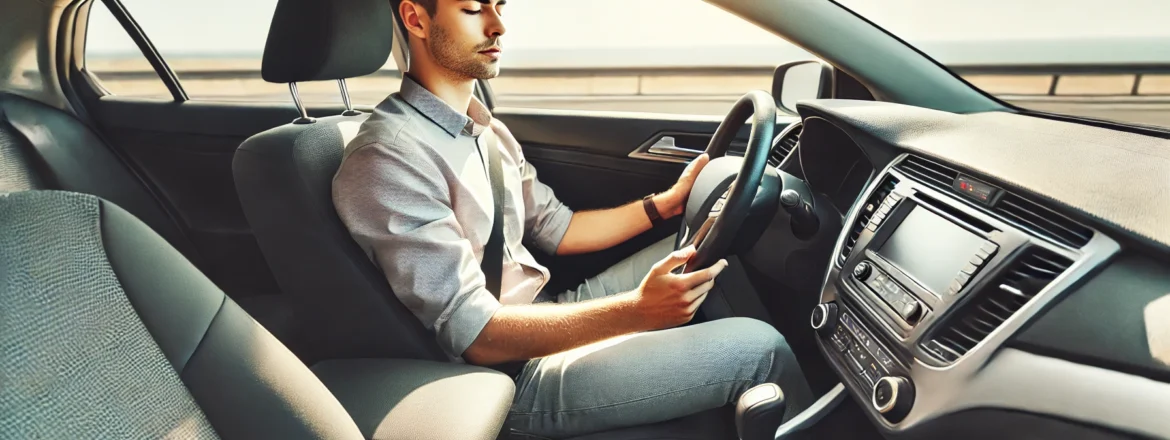Driving requires full attention and a clear mind. However, distractions are a common issue that can impact a driver’s focus and increase the risk of accidents. Whether you’re a new driver or have years of experience, learning how to stay focused while driving is essential for safe travel. Here, we explore practical strategies to maintain focus and avoid distractions on the road.
Table of Contents
- Why Staying Focused Is Important
- Common Driving Distractions
- Strategies to Stay Focused While Driving
- Tips for New Drivers to Maintain Focus
- FAQs on Staying Focused While Driving
Why Staying Focused Is Important
A focused driver is a safer driver. According to traffic safety studies, distracted driving significantly increases the chance of accidents, which can cause serious injuries or even fatalities. Staying focused helps drivers:
- React faster to sudden changes on the road.
- Anticipate the actions of other drivers.
- Avoid common driving mistakes and poor decisions.
Maintaining focus on the road can prevent most accidents, making it an essential skill for all drivers, from beginners to experienced.
Common Driving Distractions
Distractions can come from both inside and outside the vehicle. Here are some common distractions that drivers face:
- Mobile Phones: Calls, texts, and notifications are major sources of distraction.
- Eating and Drinking: Handling food and drinks divides attention.
- Passengers: Conversations, especially with children or pets, can divert focus.
- In-Vehicle Systems: Adjusting the radio, GPS, or climate control can distract drivers.
- Scenery and Billboards: Paying attention to roadside sights rather than the road can lead to lapses in focus.
Strategies to Stay Focused While Driving
1. Set Up Before You Start Driving
Prepare your vehicle before setting off. Adjust your mirrors, set your GPS, and find a comfortable position for your seat. Also, decide on music or audio in advance to avoid fiddling with controls while driving.
2. Limit Mobile Device Use
Using a phone while driving is one of the leading causes of distraction. Follow these tips to minimize its impact:
- Enable Do Not Disturb Mode: Most smartphones offer a “Do Not Disturb While Driving” mode that blocks notifications.
- Use Bluetooth or Hands-Free: If you must make a call, ensure your phone is connected to Bluetooth for hands-free operation.
- Place Your Phone Out of Reach: Consider keeping your phone in a bag or glove compartment to reduce the temptation of checking it.
3. Manage In-Car Distractions
In-car distractions like conversations, music, and climate controls are common. Here are some ways to manage these distractions:
- Set Temperature and Volume Before Driving: Adjust these settings before you start driving to prevent looking away from the road.
- Limit Conversations: Politely let passengers know that you need to focus on the road.
- Secure Loose Objects: Make sure any items in the car are secure so they won’t shift and distract you.
4. Avoid Multitasking
Multitasking divides attention, which is dangerous while driving. Here are ways to minimize multitasking:
- Do One Thing at a Time: Focus solely on driving rather than eating, grooming, or using your phone.
- Plan Ahead: If you need to check directions or make a call, find a safe place to pull over rather than attempting it while driving.
5. Take Regular Breaks on Long Drives
Fatigue can impair focus on long journeys. Regular breaks help maintain alertness and improve reaction times.
- Follow the 2-Hour Rule: Take a break every two hours on long drives to stretch and refresh.
- Avoid Heavy Meals Before Driving: Eating heavy foods can make you drowsy, reducing focus.
- Stay Hydrated: Drink water, but avoid excessive caffeine, as it can lead to an energy crash later.
Tips for New Drivers to Maintain Focus
If you’re new to driving, maintaining focus can be challenging. These beginner-friendly tips will help you stay attentive behind the wheel:
- Avoid Driving With Too Many Passengers: The fewer people in the car, the fewer distractions you’ll have.
- Practice Mindfulness Techniques: Techniques like deep breathing can help keep your mind centered on the present moment.
- Be Aware of Your Surroundings: Practicing defensive driving helps you stay aware of potential hazards.
- Build Confidence Gradually: Start by driving in less busy areas to build confidence before moving to more complex roads.

FAQs on Staying Focused While Driving
1. How can I reduce the urge to check my phone while driving?
Enable “Do Not Disturb” mode on your phone, place it out of reach, and let close contacts know you’re driving to discourage interruptions.
2. What should I do if I feel drowsy while driving?
If you’re feeling drowsy, pull over safely and take a short break. Rest or switch drivers if possible. Never try to push through drowsiness, as this increases the risk of accidents.
3. Are there specific tips for young or beginner drivers to stay focused?
Yes, young drivers can benefit from driving with fewer passengers, choosing low-traffic times for practice, and staying away from busy highways initially.
4. How can I keep my children from distracting me while driving?
If you’re driving with children, provide activities like books or soft toys to keep them occupied. Consider having a responsible passenger monitor them if possible.
5. Are hands-free devices safe for use while driving?
Hands-free devices can reduce distraction compared to handheld devices, but they still demand some mental focus. It’s best to limit all conversations and focus solely on the road whenever possible.
Staying focused while driving is a skill that requires consistent effort and mindfulness. By managing in-car distractions, limiting mobile device use, and preparing before each trip, drivers can maintain a safe, distraction-free driving environment. For new drivers, these tips will help build a foundation for safe driving habits that last a lifetime.


